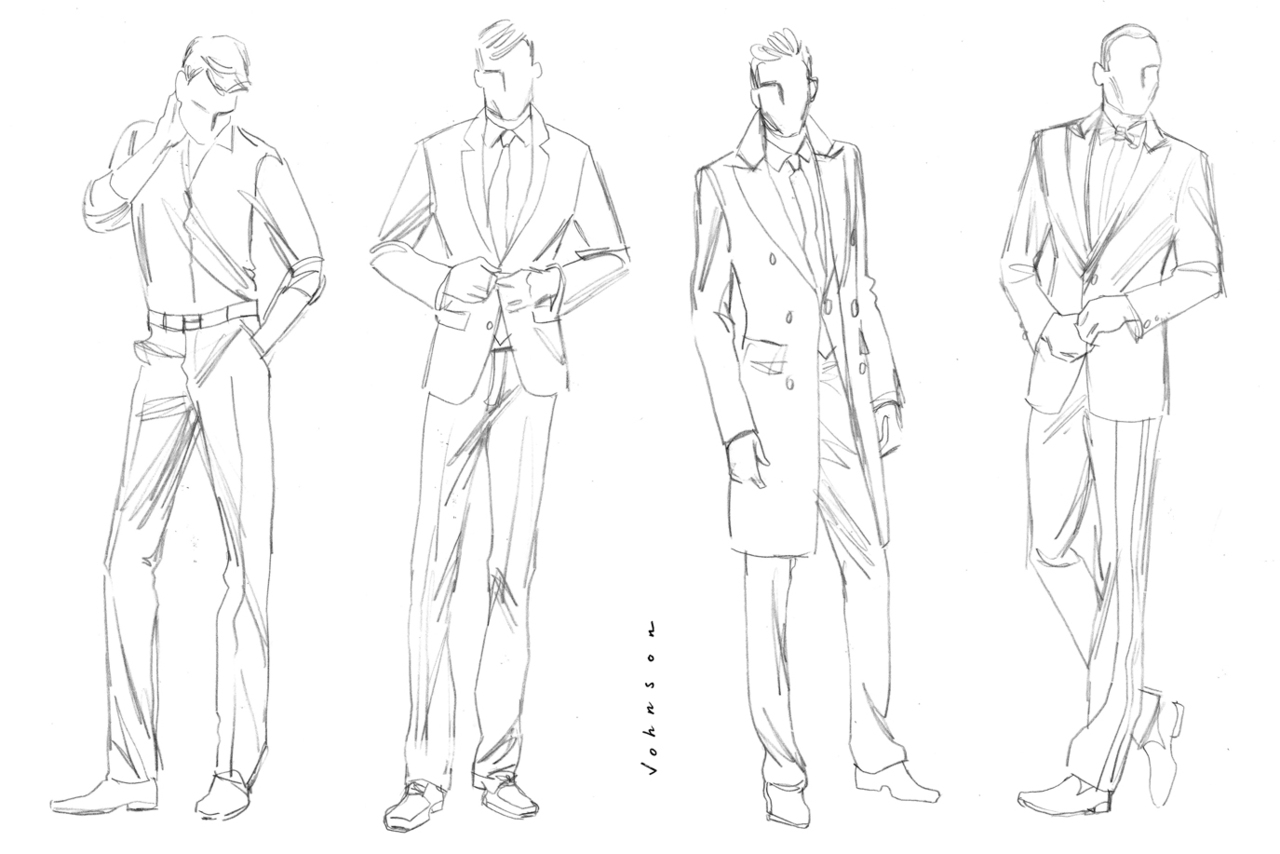

You don’t need much to get started: just a sheet of paper and a pencil. It isn’t as hard as it seems, but to really master the art will take practice.īefore you learn to draw garments, you’ll need a basic blank figure, a base upon which to draw your clothing.
#Sketch fashion big women how to#
If you want to design your own fashions, you’ll do well to learn how to make your own croquis. Most importantly, it shows the garment as it looks on a model.
#Sketch fashion big women full#
It’s presented as three-dimensional and often in full color. Older boys’ clothing more closely matched that of men: knickers, long pants, and button-down shirts.Croquis (pronounced kro-kee) is French for “sketch.” Unlike the flat, a croquis can be creative and inspirational. Little boys wore short pants with matching jackets or short overalls and shirts. Older girls more closely copied women’s styles, with the straight, drop-waist dress a popular choice. Young girls’ dress styles included baby doll, drop-waist, and sailor-style dresses. Until toddlerhood, both boys and girls wore white gowns, which shortened to knee-length once they could walk. Banded fedoras were a popular everyday choice the wide brim could be shaped to the owner’s preference. Formal occasions called for bowler hats or similar-looking Homburgs. Whether slicked straight back or parted on the side, it was often combed into place with a greasy hair product. Men with straight hair often wore it longer on the top and shorter on the sides. Men sometimes donned white or light-colored flannel suits during the summer. Sweaters and sweater vests, especially in Argyle patterns, became a sporty, casual alternative to wearing a suit jacket. The popularity of golf fueled a fad for wearing knickerbockers, longer plus-fours, and wide-legged oxford bag pants. Men appeared more frequently in public in sportswear. Men’s Casual 1920s Clothing and Sportswear Toward the end of the decade, mismatched vests were trendy.

Jazz Age culture produced the super-baggy “zoot suit.” Traditional suspenders generally gave way to belts, but some young men preferred flashy suspenders.

College students popularized the “Ivy League” look, with a slimmer fit, and longer, single-breasted jacket. Suit colors were fairly conservative African American men sometimes wore bolder colors. In the United States, suits were generally looser and longer, with flashier ties and stripes in both the shirt and suit fabric. British menswear, which set Western trends, was well tailored the typical lounge suit was wide in the shoulder, with a loose-fitting, double-breasted jacket, matching vest, and high-waisted trousers, worn with a white shirt. As the decade progressed, suits became looser and wider. Slim-fitting “jazz suits” complemented the trim physiques of Great War veterans at the outset of the 1920s. Unless working or playing, men wore suits in public.

Women wore these with pleated skirts or-more daringly-wide-legged chiffon trousers. Toward the end of the decade, sailor-inspired “middy” style and menswear-inspired button-down blouses were popular. Some women wore sleeveless tennis dresses both on and off the court.
#Sketch fashion big women skin#
A sun-tanned appearance for those with pale skin became more popular. Women’s Casual 1920s Clothing for Sports and LeisureĪn active lifestyle became more popular for women. The iconic flapper dress-sleeveless, knee-length, and often beaded, embroidered, or sequined-was a more flamboyant choice for a night on the town, especially for those who lived the lifestyle of the Lost Generation. For warm-weather parties, ladies wore elegant afternoon or tea dresses of sheer, layered fabrics in white or pastel colors. Women donned fancier dresses for special occasions. The use of aprons and labor-saving appliances at home-and the enlargement of women’s life outside the home-meant that by the end of the 1920s, women were wearing more sophisticated day dresses all day long. Housedresses were loose pullover styles in colorful gingham, plaid, vertical stripes, or solids. Women’s Dresses: They Weren’t All FlappersĮveryday dress for most women was a casual cotton housedress, sometimes homemade. It was loose, straight, and slender, with dropped waists and shorter hemlines. The classic 1920s female silhouette reflected the era’s new sense of freedom.


 0 kommentar(er)
0 kommentar(er)
